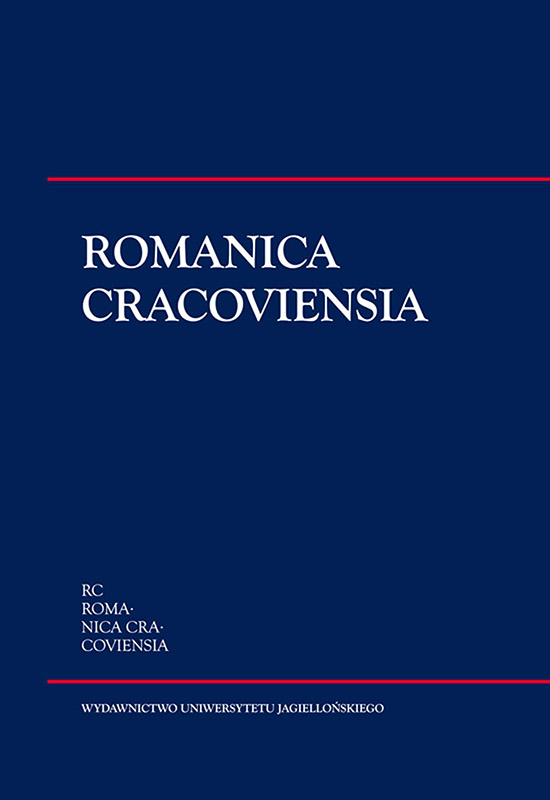
Verbos psicológicos en Español y en Polaco. Análisis contrastivo
The purpose of this study is to show the basic semantic as well syntactic similarities and differences of predicates of psych verbs in Spanish and Polish.
More...We kindly inform you that, as long as the subject affiliation of our 300.000+ articles is in progress, you might get unsufficient or no results on your third level or second level search. In this case, please broaden your search criteria.

The purpose of this study is to show the basic semantic as well syntactic similarities and differences of predicates of psych verbs in Spanish and Polish.
More...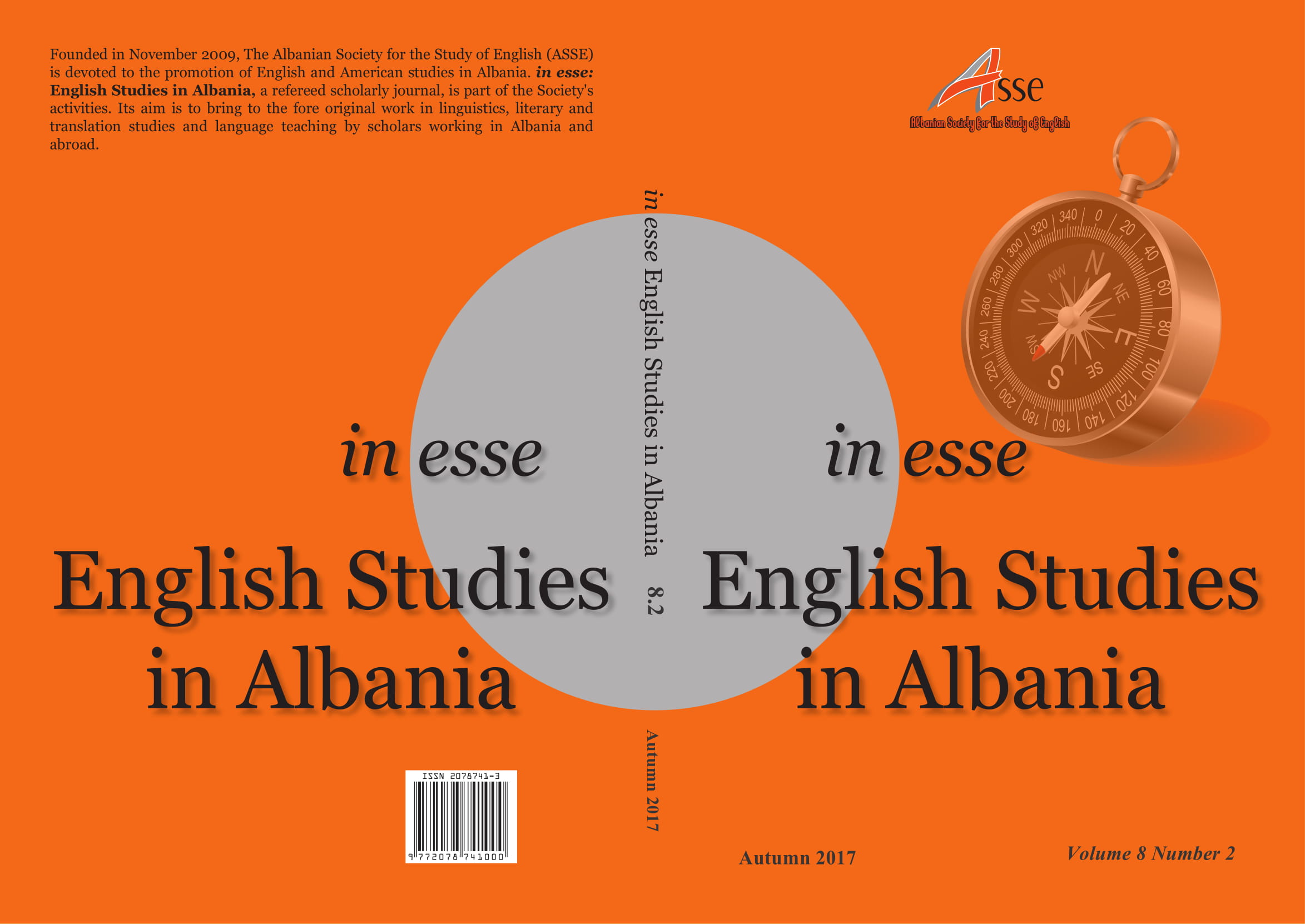
This article studies the meeting between English and all the languages spoken in the Pyrenees in the 19th century as they are perceived by British travellers. Those texts, showing a deep interest in languages, far from emphasising a separation between English and all the languages spoken from one end to the other end of the Pyrenean range, insist on the connections that those languages reveal between land and people, between past history and present time, between the evolution of landscapes and linguistic changes. Those texts show first and foremost a sense of connection seen in the meetings of languages, either when they are observed in place names, inscriptions or in the conversations, songs or poems of the populations.
More...
The speech of Arbanasi from Zadar and its influence on their language competency in their Croatian language mastering is analyzed. In order to understand the situation with three languages in contact (speech of Arbanasi, Croatian and Italian) the historical background of Arbanasi and their attitude to language is presented. Method of talk and recording with the oldest fellow-townsmen (between 55-85), middle-aged (30-55), and the youngest (to the age of 30), along with making comparisons with their present way of speaking with the one of 50 years ago, were used. Mastering in the Croatian language competency was researched according to age, sex, environment, profession and degree of education. Results have shown that only a small number of people speak Albanian, mainly older. People who worked, people with secondary school education, and a small number of those with academic degree, managed in mastering in the Croatian language competency at a larger scale, but even today the influence of the speech of Arbanasi is present. The survey of interlanguage features of the Croatian speech and that of Arbanasi is presented through research conducted at three levels: morphological, lexical, and phonological.At morphological level, mistakes in using the case endings, prepositions, verb forms and possessivness, are presented. At lexical level, examples with dialect features, mainly Italian or Croatian borrowings, were given. At phonological level, some most outstanding examples of the speech of Arbanasi were compared with the Croatian phonological system.
More...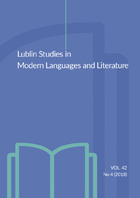
This study seeks to approach the problem of correspondences between adjectives in the context of translation. On the basis of the French adjective clair, e analyzed as a case of study, the author demonstrates that these items could have a few interpretations in French and in Polish. Such multiple interpretations raised by polysemy can be a problem for the description of these items in lexicographical publications, as well as for translation. Correspondences between adjectives are rarely bi-univocal in two languages and this study gives some insights into the possibilities of using these terms in both languages. Differences between the senses are often highly subtle and contextually determined, so the author makes use of the theory of classes of objects. This kind of complex description allows to find the correct equivalent in another language and to make explicit the relations of equivalence between the two languages.
More...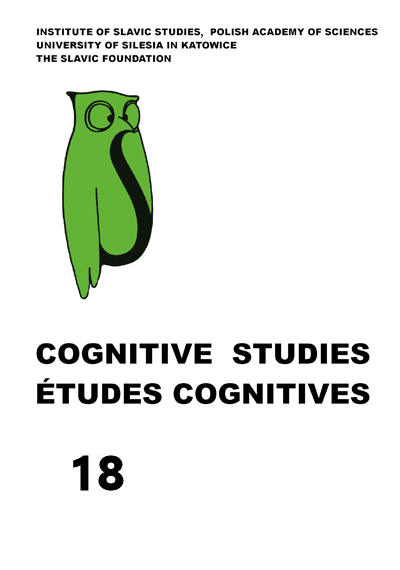
Interlocutors in a conversation influence each other in a number of dimensions. This process may lead to observable changes in their communicative behaviour. The directions and profiles of these changes are often correlated with the quality of interaction and may predict its success. In the present study, the gestural component of communication is scrutinised for changes that may reflect the process of alignment. Two types of task-oriented dialogues between teenagers are recorded and annotated for gestures and their features. We hypothesize that the dialogue task type (collaborative vs. competitive), as well as certain culture-specific properties of alignment that differ between German and Polish pairs, may significantly influence the process of communication. In order to explore the data and detect tendencies in gestural behaviour, automatised annotation mining and statistical exploration have been used, including a moving frame approach aimed at the investigation of co-occurring strokes as well as re-occurring strokes and their features. Significant differences between German and Polish speakers, as well as between the two dialogue types, have been found in the number of gestures, stroke duration and amplitude.
More...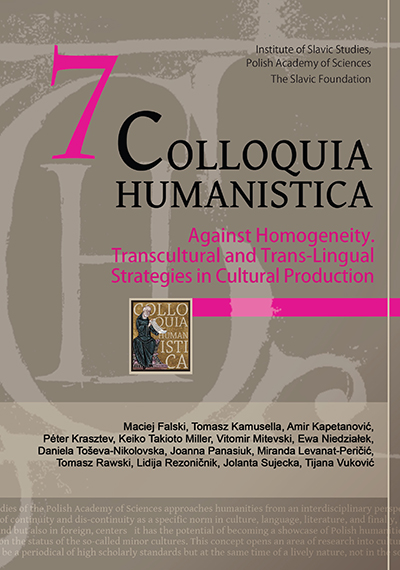
Comparative analysis of the most prominent heroic characters of Byzantine (Armouris and Digenes) and Macedonian (King Marko) epic poetry uncovers numerous contact points that reveal a close relation between these two cultures over a longer period of time. By using the term “akritic hero” or border warrior in Byzantine and the term kraishnik in Macedonian epic poetry, the paper analyses the relation between these two representations of the same type of epic hero. Complex concordance is explored on several levels which illustrate several characteristic features of the Byzantine akritic heroes Digenes and King Marko in traditional Macedonian epic poetry. Both Digenes and Marko are lone horsemen roaming in restricted territory (Cappadocia and Macedonia), they fight as individuals with distinguished opponents and even with armies, and win the fights, slay the dragon in an identical manner; there are occurrences of child-heroes in the songs and the institution of the avunculate is particularly emphasised in the act of initiation etc. Unlike the monolithic character of Homeric heroes, in Byzantine and Macedonian epic poetry both Digenes and Marko are significantly more complex and occasionally inconsistent characters, which is due to their centuries-long shaping in territories where different cultural influences are interwoven.
More...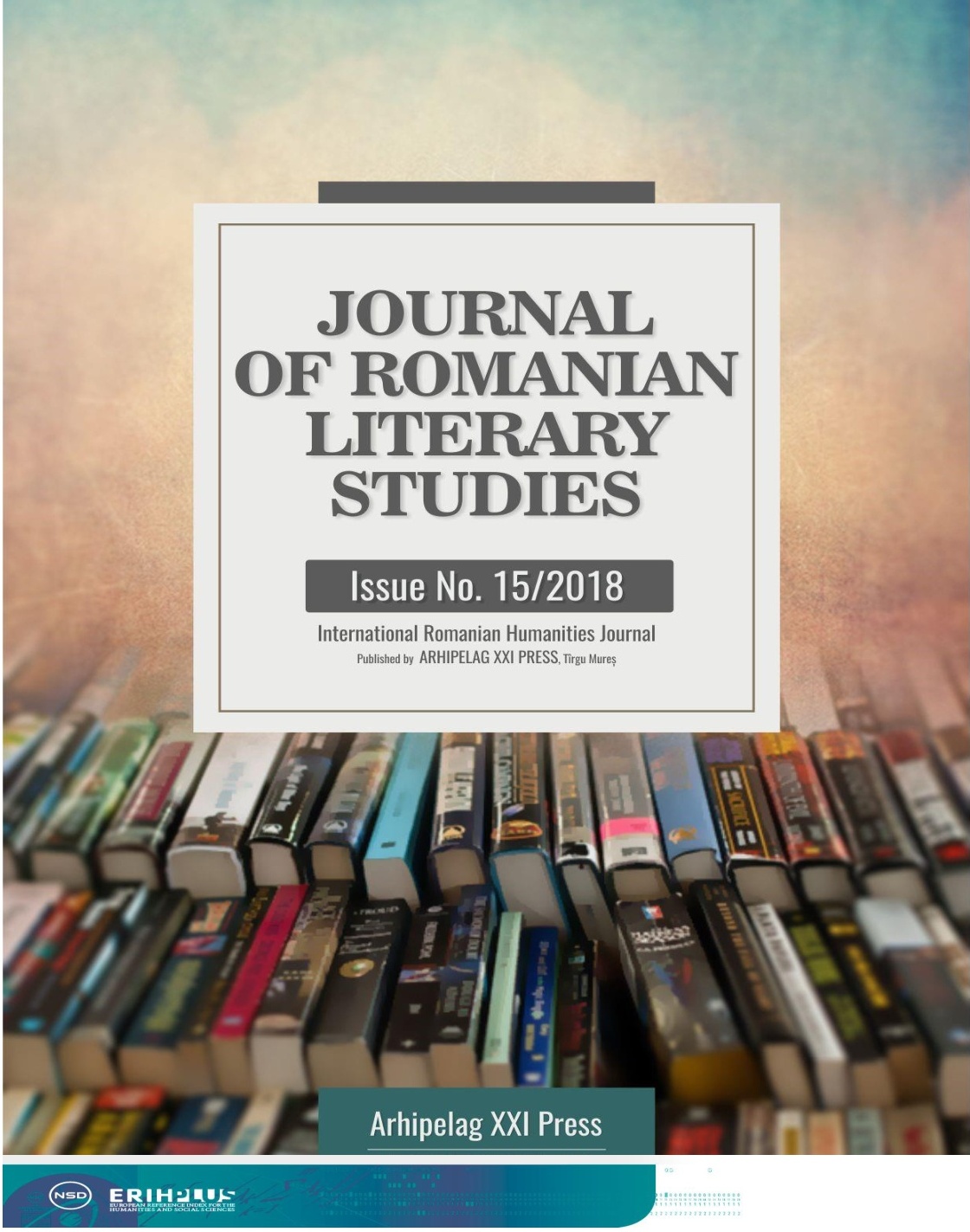
Along the centuries, Latin, Greek, Italian, Portuguese and French have each been the world’s lingua franca at one point or another. English in turn is used currently anywhere around the globe when two or more people meet who need to talk to each other and do not share the same first language. As the title of this article states, it is paramount for the identity of a culture and its pertaining language to wonder how much can sometimes prove to be too much? Anglicisms as defined by the Oxford Dictionary of the English Language represent a word or phrase borrowed from English into a foreign language, i.e. a harmless means of language enrichment. Only it turns out that when abused of, loan words may eventually affect the entire concept of enrichment. Have we actually enriched Romanian by taking over English words and using them as such or have we merely depleted it of the purport of its very existence?
More...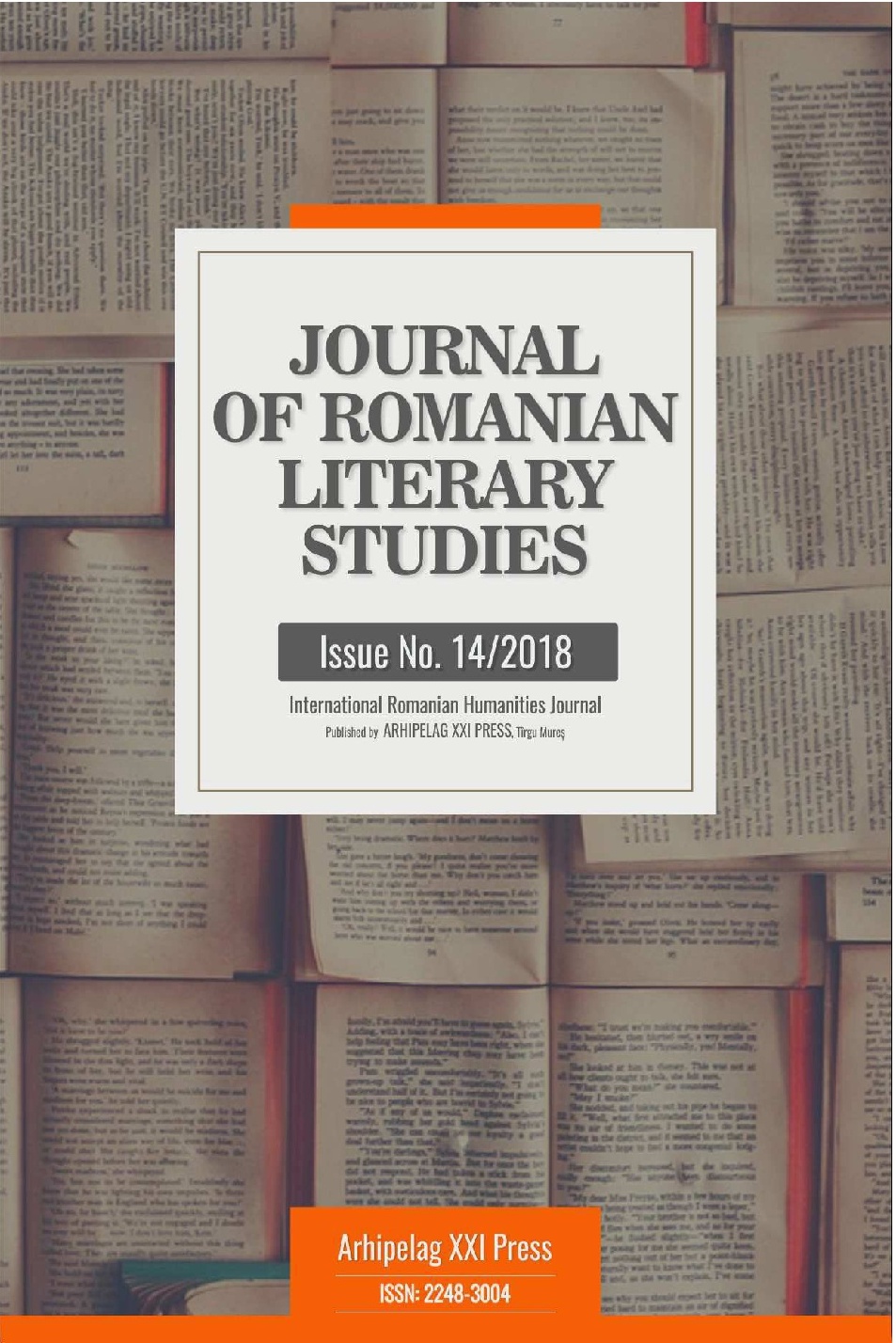
Although the concept of „politeness“ as a normative of universally positive interaction patterns has been the subject of numerous studies in fields such as psychology and sociology, the linguistic approach towards pragmatics has only been developed since the rise of great researchers such as Erving Goffman. This work analyses the manifestations of „politeness“ in directive speech acts in German and French, in form of case analysis with the focus on performative aspects. Its purpose is both academical and didactical, as it contains a section with suggestions on the implementation in classroom.
More...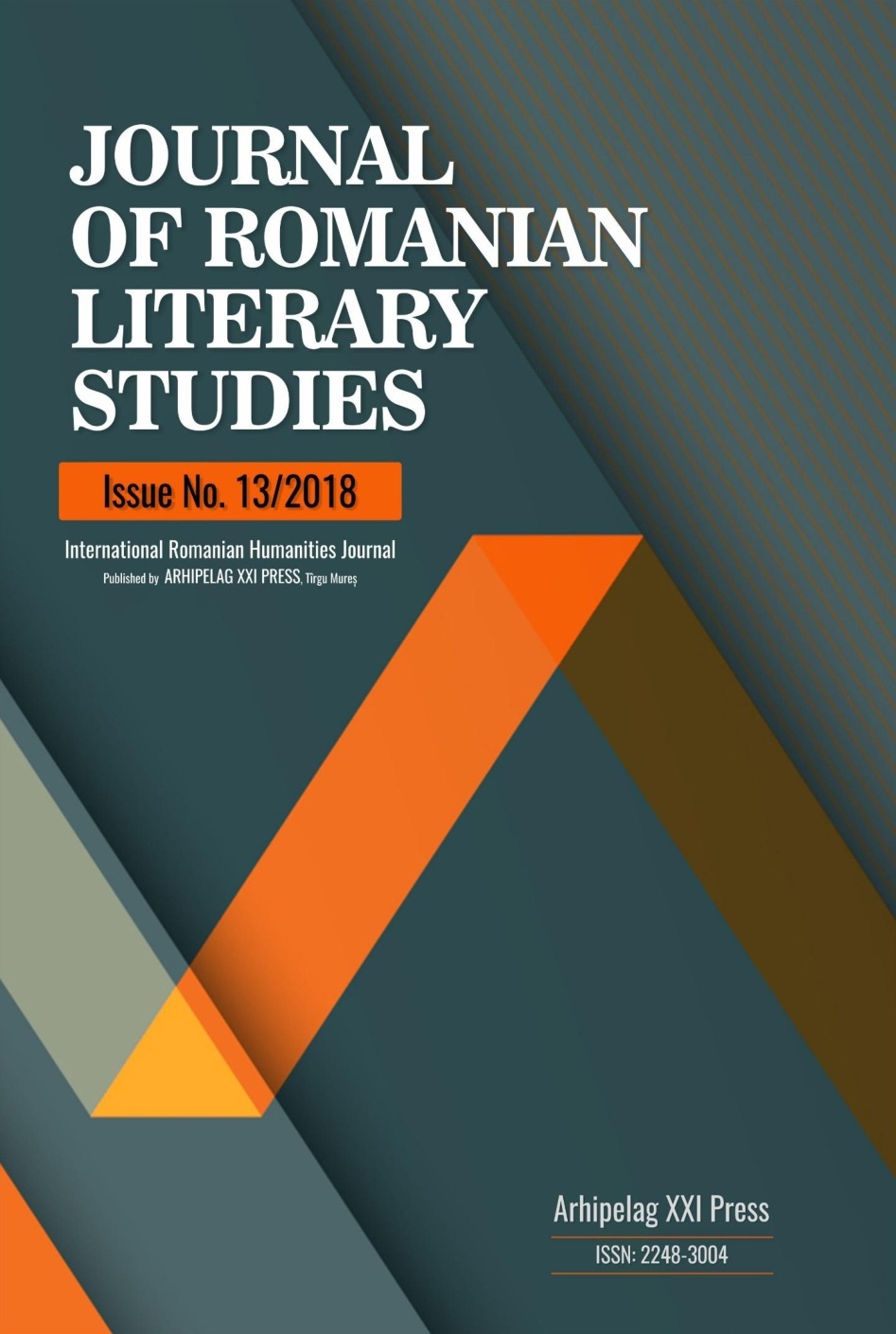
This Case Study aims to depict some traits of intercomprehension between two Romance languages Romanian and French as they result from answers on a written questionnaire rendered to 39 people, whose first or second language is French. The participants had to ascertain their competence in reading comprehension either by answering 10 questions in Romanian, or by translating into French the words they could understand. After separate analysis of the set of answers for each question, a comparison of all the answers and the degree of overall understanding is accomplished. The characteristics of comprehending (or not) words and groups of words are accounted in order to discover specific traits of intercomprehension between Romanian and French. We started from the supposition that the origin of words plays an important part in understanding among people speaking Romance languages, and also that the length of the sentences might affect in a negative way the cognizance of the respondents.
More...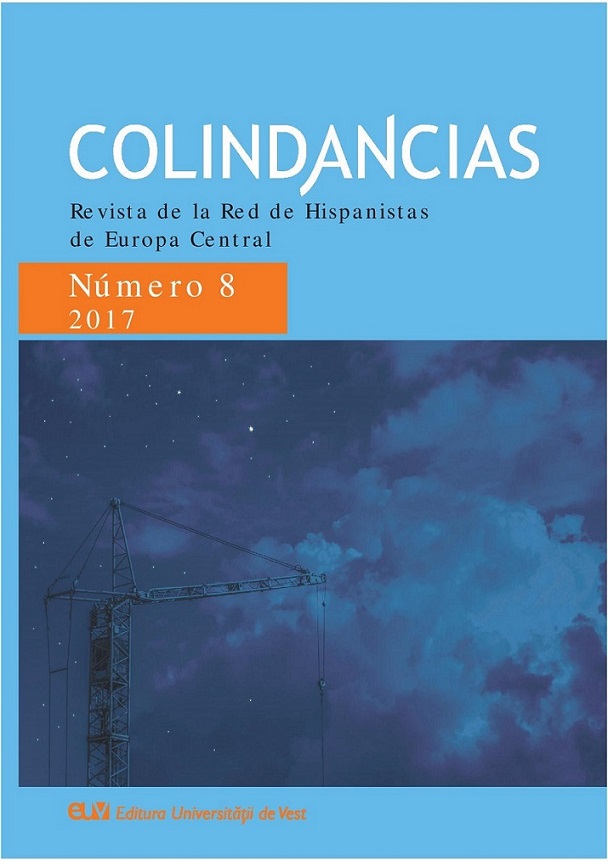
This study aims to present a comparative approach to the similitudes and differences in the evolution of the expression of affirmation in Romance Languages. Contrary to Latin, the Romance languages do have a specialized particle to express the affirmation, but with some differences form one language to another. At a first glance Spanish, Italian and Portuguese share the same evolution, but Portuguese is characterized by the reduced use of the sim particle. French has two particles, while Romanian particle da is a borrowing from modern Slavic languages. The alignment of Romanian to the conceptual pattern of the other occurred very late, in the XIX century.
More...
Due to the lack of contrastive grammar studies between Galician and Romanian, with the first being the most western Romanic language ―along with Portuguese― and the second one the eastern one, we elaborated the thesis “Comparative study of the Galician and Romanian pronominal system: the personal pronoun in Os outros feirantes / Alţi tîrgoveţi by Álvaro Cunqueiro”. From the many conclusions that we extracted from this work, this article is born with the aim of showing the divergences and similarities in the placement of the 3rd person pronoun, both in singular and plural, in both languages, in the studied corpus.
More...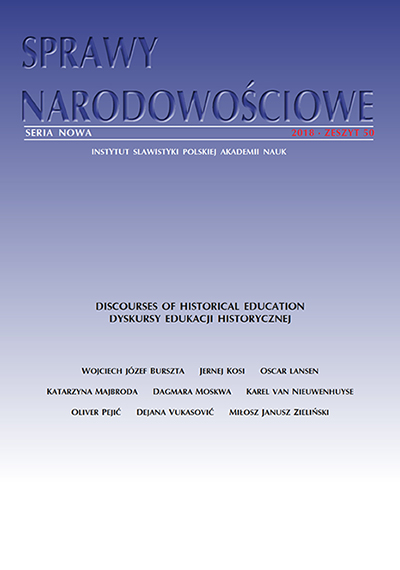
The article presents the language situation in the independent country of Ukraine. It shows what part of Ukrainian society perceives the Ukrainian language, the Russian language or both of these two languages at the same time as their mother tongue. The paper also shows which of the two languages, Ukrainian or Russian, is more commonly used by Ukrainians in everyday life. Special focus was placed on linguistic diversity of particular regions of Ukraine. The aim of the paper was achieved by analyzing the general census of 2001, as well as the results of the public opinion polls conducted in the period of independence by, among others, the “Public Opinion” Centre for Sociological Research, the Olexander Razumkov Ukrainian Centre for Economic and Political Studies and the Kiev International Institute of Sociology.
More...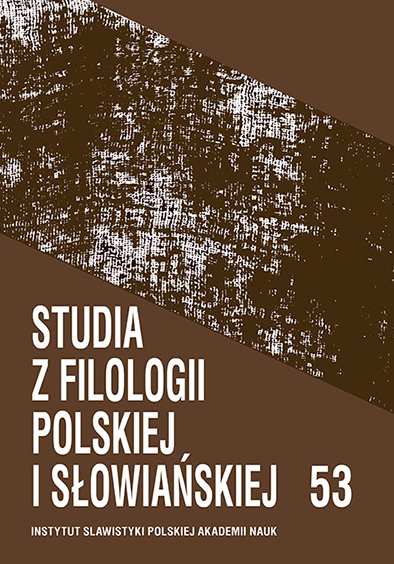
The paper examines the issue of how the term sustainable development (sustainability), coined exactly 30 years ago by the United Nations World Commission on Environment and Development, has been reproduced in the Slavic languages. The history of the primary English term’s first use as well as its source have been discussed, with special consideration given to the fact that both English and Slavic terms expressing the concept of sustainability have native components. Using a semasiological approach to the studied terminological units, the author analyzes their outer and inner form of the terms in relation to their meaning (definition). The study emphasizes the semantic progression within the various Slavic words used as terms expressing the contemporary idea of sustainable development. This semantic evolution is observable, among other things, in the component of positive evaluation inherent in the terms’ meanings and definitions.
More...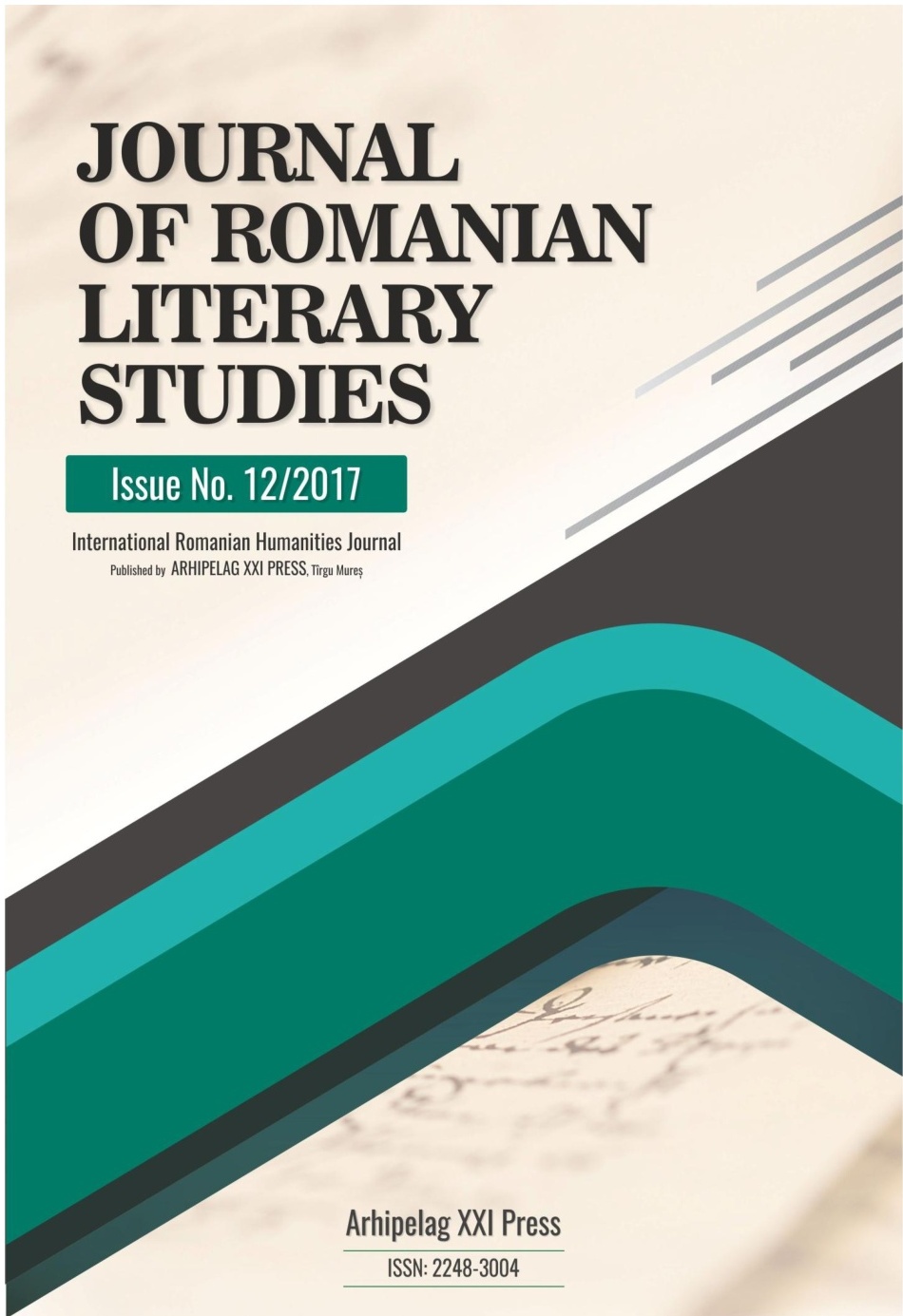
The present article describes theoretical issues of the English conditional sentences, including definitions and types, leading to concerns regarding teaching them. We argue that the concept of remoteness developed by Michael Lewis (1986) is much more suitable to describe conditionals, as well as it offers a more logical approach to tackle various less standard types, such as 'mixed', 'zero' or less frequent verb forms (e.g. continuous). A possible way to understand conditionals may start from a non-native speaker perspective, in our case Romanian or Hungarian, making students aware of the challenges represented by the English conditionals. We also offer a popular option to make students discover 'real-life' conditionals with the help of the entertainment industry, while the references contain major English, Romanian and Hungarian sources in the field.
More...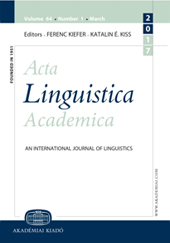
In some recent works on negative polarity, exhaustivity is posited as the single defining property of all negative polarity item (NPI) and free choice item (FCI) paradigms. Chierchia (2006; 2013), and Chierchia & Liao (2015) are the best-known implementations of this theory. They stipulate that all NPIs and FCIs must be exhaustified, and posit a covert O(nly) and a syntactic feature [+Σ] to derive exhaustification and licensing respectively. In this paper, I challenge the exhaustivity hypothesis and find it, after careful empirical investigation, to be inadequate to explain the distribution and interpretation of NPIs in Greek, Korean, and Mandarin, which have been described in the literature as non-exhaustive. We also find the theory to be unable to derive the actual distribution of any in nonveridical contexts. Analytically, the problems with exhaustification are twofold. First, the use of covert O(nly) fails to account for why NPIs are licensed. Licensing is a grammaticality condition, and in order to capture it the syntactic feature [+Σ] is stipulated, NPI-licensing thus amounting to checking the [+Σ] feature. The stipulation of [+Σ], without a coherent characterization of its semantics, is a regression to a Klima-esque (1964) syntactic account, and faces precisely the challenges that that account faced. Second, for any variant of the Chierchia system to work for the data discussed here, the system built around it must posit additional ad hoc rules on a case-by-case basis. This produces a system with very little predictive power beyond each specific case because of the ad hoc nature of the rules posited. Our overall conclusion will be that the exhaustivity hypothesis, as formulated in the works discussed here, is a falsified, therefore unnecessary, hypothesis for NPIs.
More...
Our article aims at focusing on words or phrases belonging to the slang linguistic compartment, which is a section less approached by linguists, precisely because of its moral character, since the slang expressions designate some intriguing aspects of language that might seem filthy or vulgar. The English language has a vocabulary at least as plentiful as the Romanian language, therefore, if the long list of the English synonyms for a certain slang word were translated through one and the same filthy expression, the Romanian reader would be deprived of the contact with the lexical abundance and figurative imaginativeness of the Romanian language. The slang expressions related to birds and insects are numberless, as for almost each and every bird or insect we can find a figurative connotation that gives rise to a slang phrase.
More...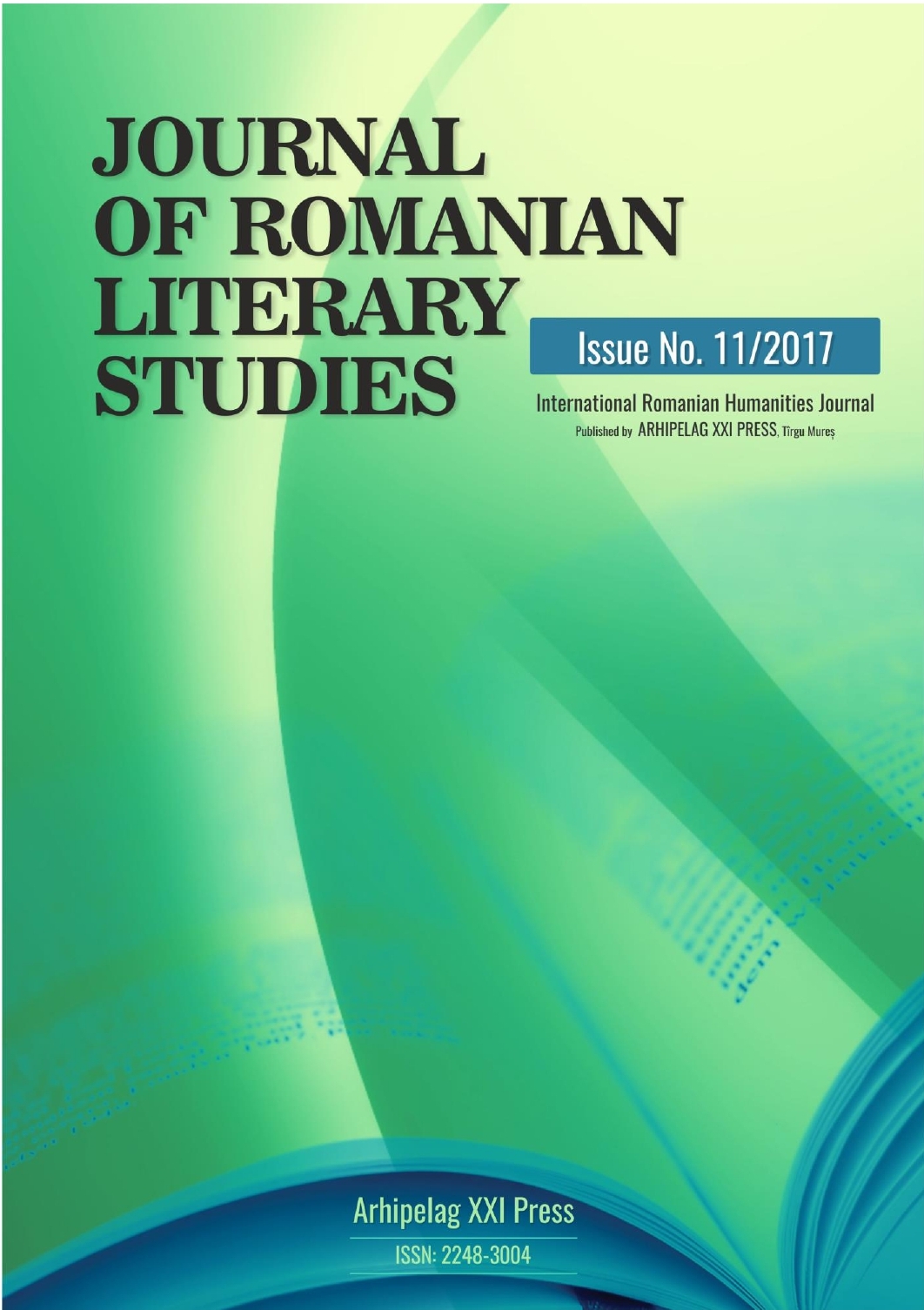
Our communication is an overview of anglicisms recently entered in the two Romance languages, Italian and Romanian, by using the information provided by two great Italian linguists, Giuseppe Antonelli and Gian Luigi Beccaria, but also from personal observations while listening to radio broadcasts or watching Italian and Romanian TV channels, or by reading online and off line newspapers or tourist information. This massive penetration of anglicisms in Romanian, about which many have already written a lot is due to the existence of multinational companies in our big cities, to IT industry development, to the development of the internet as well as of social media.
More...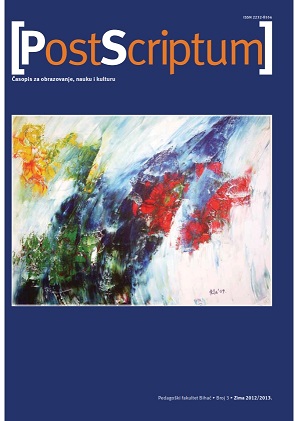
Auf Grund fehlender Studien, die sich mit dem Vergleich substantivischer Zusammensetzungen der deutschen Sprache mit den Substantivzusammensetzungen der bosnischen Sprache befassen, wird in dieser Arbeit eine kontrastive Studie der Fugenelemente (Interfixe) dieser zwei Sprachen durchgeführt. Das Korpus, das die Basis dieser Untersuchung darstellt, stammt aus dem Roman „Medea: Stimmen“ von Christa Wolf und dessen Übersetzung in bosnidner Sprache. Um einen Vergleich der zwei konfrontierten Sprachen anstellen zu können, werden zuerst alle bestehenden Fugenelemente (Interfixe) der deutschen Sprache (Fleischer / Barz, Naumann, Duden, Lohde) und der bosnischen Sprache (Čedić, Brabec / Hraste / Živković, Jahić / Halilović / Palić) ermittelt. Danach werden diejenigen substantivischen Zusammensetzungen der deutschen Sprache entnommen, denen als Übersetzungsäquivalent ebenfalls eine substantivische Zusammensetzung gegenüber steht. Damit soll ein kontrastiver Vergleich, sowie eine Analyse der Fugenelemente der bosnischen und deutschen Sprache ermöglicht werden, um festzustellen, um welche Ähnlichkeiten bzw. Unterschiede es sich handelt und wie viele Klassen von Fugenelementen in beiden Sprachen vertreten sind.
More...
Die deutschen Einflüsse auf das Bosnische kann man aus unterschiedlichen Aspekten analysieren. In dieser Arbeit werden die Germanismen aus der Perspektive der Interferenz betrachtet. Das geliehene Wort bezeichnen wir als „Modell“. In der Nehmersprache bekommt es die entsprechende „Replik“ welche sich in das bosnische Sprachsystem eingliedert und sich auf allen Sprachebenen anpasst. Wir fokussieren uns in dieser Arbeit auf die morphologische Anpassung der substantivischen Germanismen. Durch Beispiele zeigen wir die verschiedenen Anpassungsprozeduren der substantivischen Germanismen und ihre Veränderungen im Bereich der grammatischen Kategorien. Die Grunglage dieser Untersuchung bezieht sich auf ein Korpus aus 6730 Germanismen, die aus verschiedenen Tages - und Wochenzeitungen der Region Bosanska Krajine stammen. Es handelt sich um die überregionale Tageszeitung „Dnevni avaz“ und die regionalen Wochenzeitungen „Krajina“, „Moja Sana“ und „Reprezent“ (erschienen im Zeitraum von 2008 bis 2011).
More...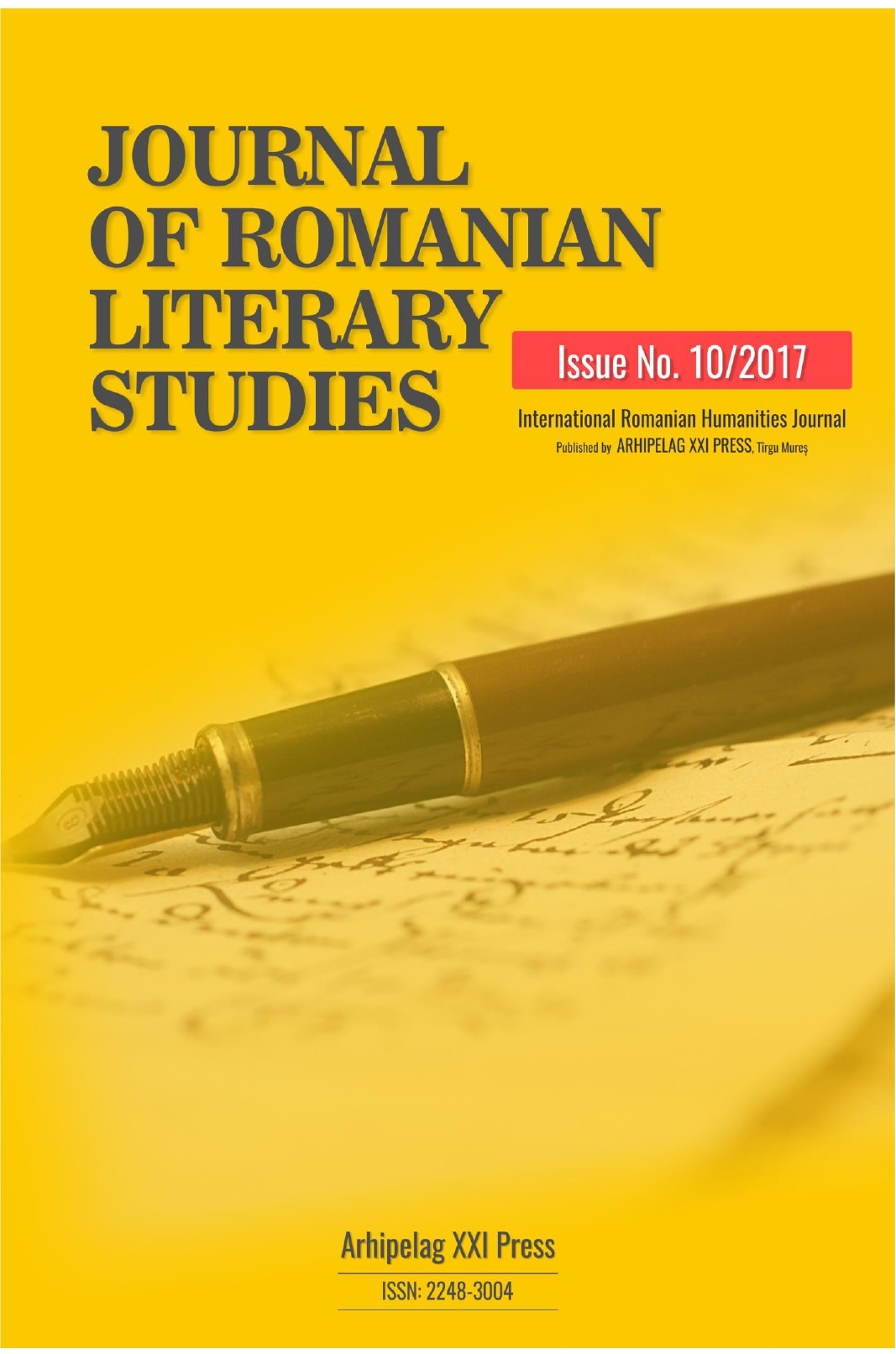
The philological study contains a comparative analysis of the “Romanian Grammar”, by Dimitrie Eustatievici Braşoveanul, 1757 (edition by N. A. Ursu, Scientific Publishing House, Bucharest, 1969) end “Orthography or the correct spelling to guide Romanian language writers”, Buda, 1818, by Constantin Diaconovici-Loga. We have tried to see the extent to which Diaconovici-Loga was influenced by the previously published normative writing.
More...